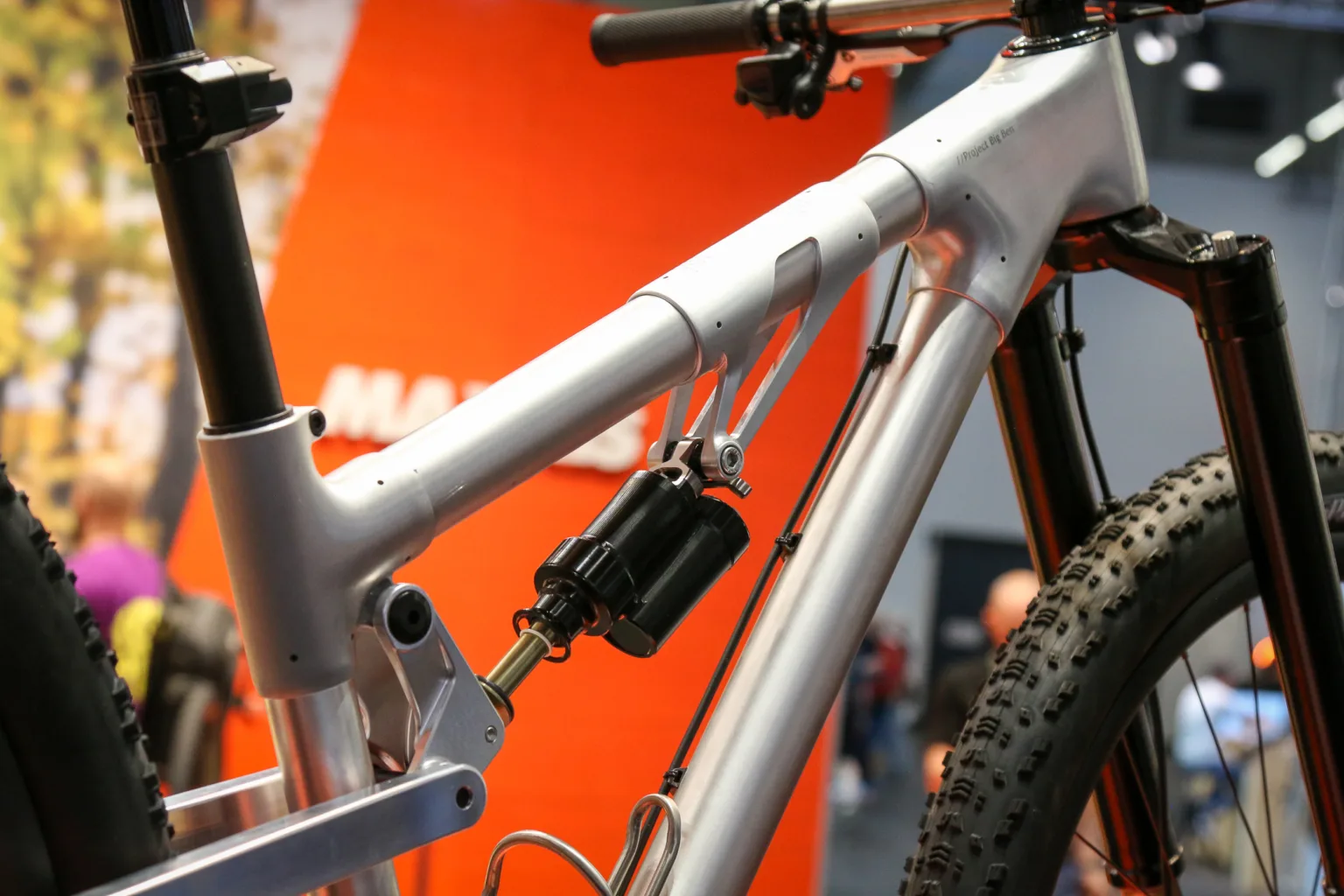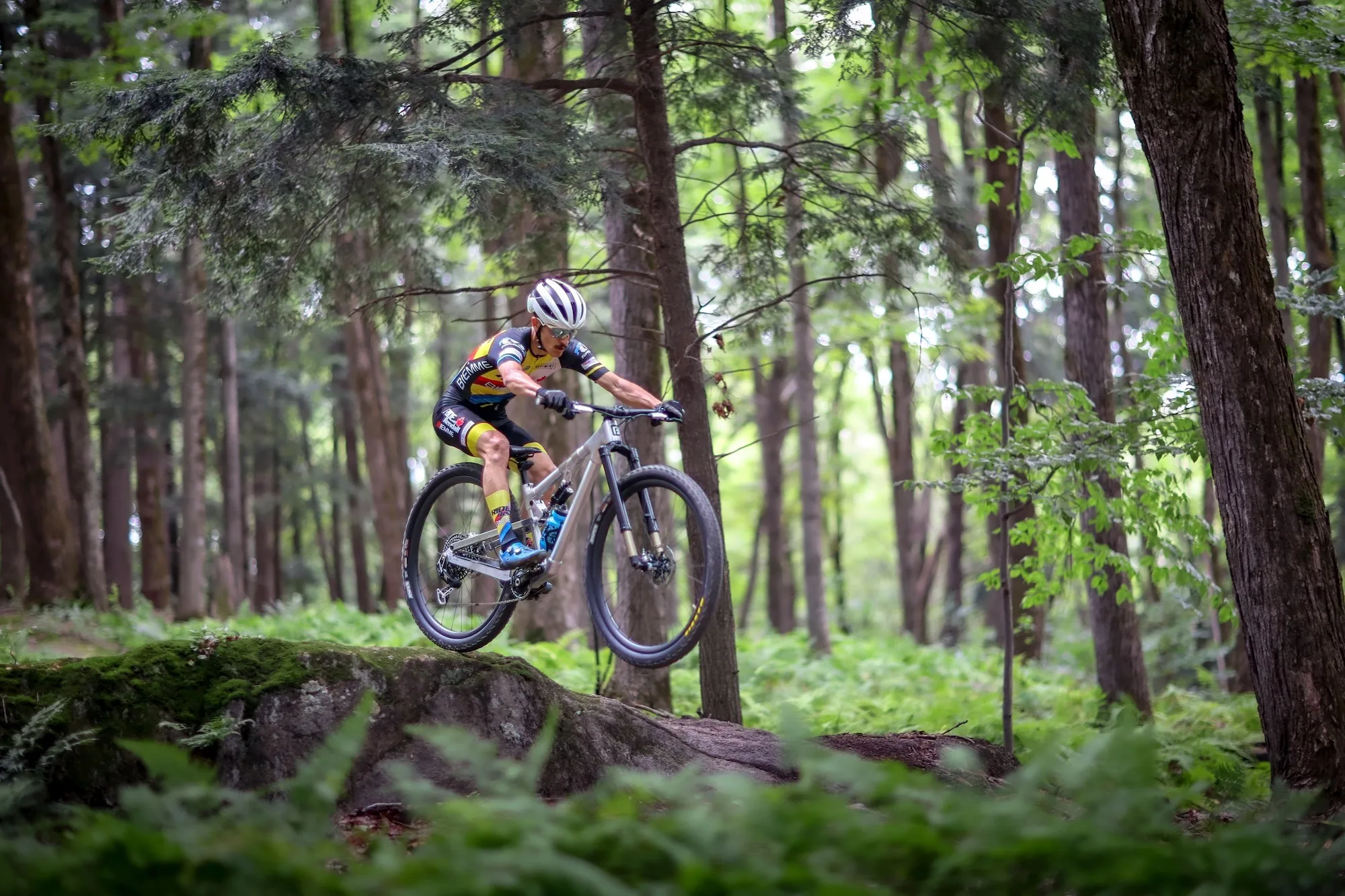Big wheels were a common sight at Eurobike this year, including Faction Bike Studio’s 32-inch full suspension prototype on display — and getting a lot of attention — in the Maxxis booth. While “Project Big Ben” broke cover and received much fanfare at the show, it had never been ridden and was a completely untested concept bike.
“The idea wasn’t to launch a polished product,” says Faction Product Manager, Adam Robbins, “but to challenge what’s possible and expand the way we think about performance and comfort in off-road cycling.”
Since then, the folks at Faction Bike Studio have completed their very first rounds of test rides, gathering real-world impressions on the performance, benefits, and drawbacks of 32-inch wheels and tires on the trails. Fortunately, we’ve worked with the Faction team on previous projects, and they were kind enough to share their intial ride impressions and some photos with us.


Project Big Ben
If you haven’t been following along, this concept bike, named Project Big Ben, was conceived and prototyped earlier this year in the few short months between Sea Otter and Eurobike. Using Faction’s rapid prototyping capability, the bonded aluminum frame was paired with a custom Intend inverted 32-inch fork and Maxxis’ 32-inch Aspen prototype tires. It has 120 mm of travel front and rear, and appears to be XC-oriented.
Of course, it isn’t the only 32-inch bike around, with Dirty Sixer’s production 32er hardtail on track to launch soon, and brands like BMC are openly experimenting with bigger wheels, too. We’re quite confident that plenty of brands have been testing 32-inch wheels, bikes, and related components behind the scenes as well, but most have done well to keep it under wraps.
None of us at Bikerumor has ridden a 32-inch-wheeled bike yet. In fact, very few people have. Sure, we have assumptions about how they might perform, but without trying these bigger wheels and tires for ourselves, they are just that: assumptions. Which is why we’re excited that Faction is giving us a look behind the curtain and sharing its ride impressions with us. Here’s what they had to say after testing Big Ben.

From the Faction Press Release:
Initial Ride Impressions: Big Tires, Big Possibilities
Ride Quality & Comfort
Riders quickly noticed a smoother, more planted ride compared to traditional 29” setups. The larger wheels rolled effortlessly over roots and rocks, significantly damping trail chatter. Rider position felt more centered within the bike, enhancing control and confidence, particularly in fast, rough terrain.
Climbing & Acceleration
Perhaps most surprising was how well the Big Ben climbed. Traction and momentum on technical ascents improved, with testers noting a more confident pedal feel and less tendency to stall out on tricky features. Acceleration felt unexpectedly light for a wheel this large, though testers recommended gearing adjustments, such as smaller chainrings, for optimal performance.
Descending & Handling
Descending showcased both strengths and limitations. The big wheels smoothed out small bumps and chatter impressively, but the current short travel XC setup occasionally felt undergunned on steep drops, with some front-end dive. Steering was responsive, though slightly more deliberate than a 29”, requiring a bit more commitment in tight terrain.
Traction & Tires
Dry conditions brought out the best in the oversized contact patches, traction was excellent, even on loose surfaces. However, performance dropped noticeably in wetter sections, highlighting the importance of tire choice and tread design for future iterations.
Fit, Geometry & Agility
Fit was solid across the board. Geometry felt well balanced overall, though feedback suggested a slightly shorter rear center and revised front end setup could enhance descending confidence.
Jumping & Technical Riding
Jumping was stable and confidence inspiring. That said, manuals and bunny hops were trickier to initiate, as shifting weight rearward required more effort than on smaller wheels. Tight, technical line changes demanded precision, but felt manageable with proper technique.
Looking Ahead: Concept Today, Platform Tomorrow?
While Big Ben remains in its early concept stage, Faction’s internal discussions have already turned toward potential applications. Test riders saw serious promise for XC, trail, and gravel use. One particularly intriguing takeaway? The idea of a mixed wheel setup, with a 32” front and 29” rear, as a potential game changer for aggressive trail and enduro categories.
For now, Big Ben is proof of possibility, a concept that went from sketch to test ride in under three months, challenging assumptions about what a mountain bike can be.

Our Takeaway
Without riding Big Ben for ourselves, it’s obviously hard to know exactly what it’s like, but for the most part, Faction’s ride impressions align with what we think riding 32-inch wheels would be like. A smooth, planted, and stable ride, easier rollover, enlarged contact patch, and enhanced traction (with the right tires for the conditions) are some of the main advantages that we’d expect from larger wheels and that Faction noted in their ride impressions.
Of course, those perceived benefits go hand in hand with some seemingly minor downsides noted by the test riders. Those include the potential need to make gearing adjustments, steer more deliberately (I remember the first time I rode a 29er), and more effort required to get on the rear wheel. Of course, handling differences are something most riders will adapt to over time, and things like choosing the right gearing, frame geometry, and suspension travel will shake out with future testing and designs.
For now, we’ll have to wait and see what the future of 32-inch wheels and tires is, but I’m expecting to see more 32-inch wheels, tires, and forks that will contribute to the proliferation of more prototype (and production) XC, gravel, and trail bikes in the coming months and years. I’d also agree with Faction’s assessment that mixed wheel setups with 32-inch front wheels seem like a likely potential application.
In the meantime, I’m looking forward to seeing some more ride impressions from Faction, hopefully including some back-to-back timed testing against 29-inch wheels for comparison. Who knows, maybe we’ll even get to try out Big Ben for ourselves. Fingers crossed…
